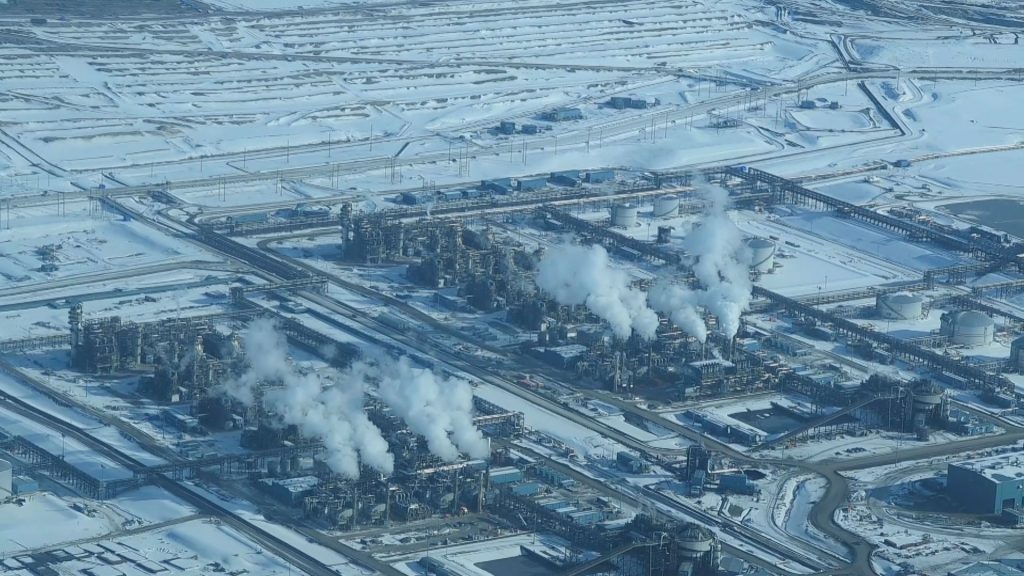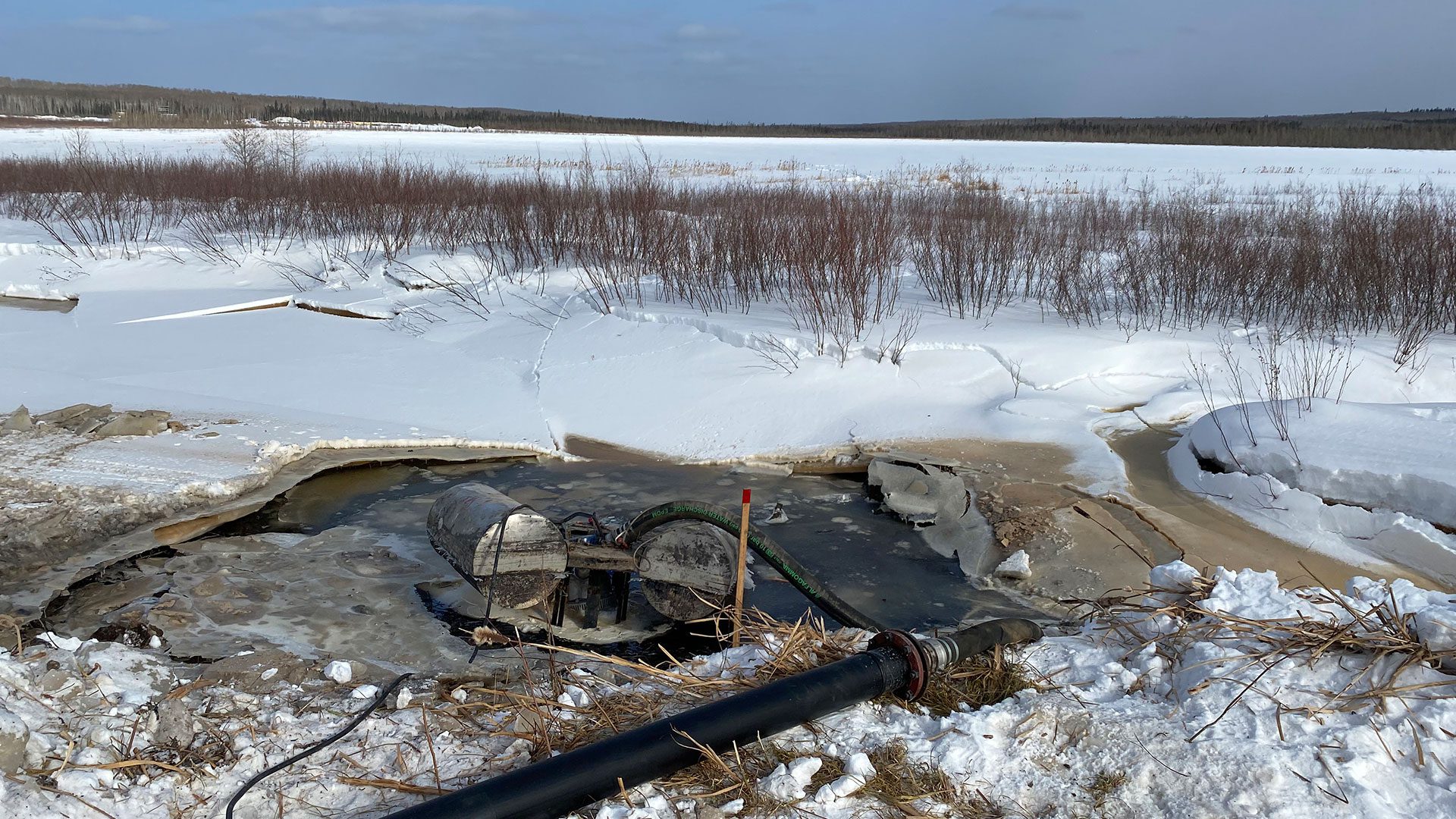
The Alberta Energy Regulator or AER has issued Imperial oil with a notice of non-compliance after chemicals associated with tarsands tailings were found at an off-site well at levels that exceed provincial guidelines.
“In light of the exceedance of sulphate levels in the off-site well, we have issued a notice of non-compliance to Imperial for failing to control industrial runoff,” said a notice from the regulator.
Imperial Oil said in an email to APTN News that it is normal practice to report results “above criteria” at their monitoring wells.
“This is part of the routine regulatory process and is not associated with the seepage around the external tailings area,” said an Imperial spokesperson.
APTN has also confirmed with Imperial that between five to ten deceased frogs were found near a lake during their sampling and monitoring program. Imperial said that the frogs are being collected for additional assessment.
The AER notice said sulphates have been detected in a well near a mine overburden disposal area that is 100 metres from the Muskeg River, a tributary of the Athabasca River.

Data from the provincial tarsands monitoring program using samples from the Muskeg River show sulphates measured suddenly spiked by a factor of roughly 10 in the first three months of 2023.
According to WebMD sulphates can be naturally occurring or created through industry and are not harmful themselves. They are tracked because they are often found in high concentrations in tailings, which are toxic.
The regulator said in a statement that Indigenous communities that are close to the Imperial Oil Kearl site have been informed.
The province’s regulator told the Canadian Press that there is a communications restriction in place during to the period leading up to the May 29 provincial election.
In this instance, the regulator has received special permission from the chief electoral officer to “continue communicating directly with Indigenous communities and the Regional Municipality of Wood Buffalo on matters related to Imperial’s Kearl site.”
Imperial Oil is using sulphate measurements to outline how far seepage from one of its tailings ponds at Kearl has spread.
The company is still dealing with issues created by those releases.
Read More:
Environment Canada announces investigation into leak at Imperial Oil’s Kearl tarsands site
Anger, fear and questions mark a meeting in Fort Chipewyan with Imperial Oil
In May 2022, workers discovered discoloured water seeping near a tailings pond on the north of the mine site. That substance was later found to be groundwater mixed with tailings.
The following February, another 5.3 million litres of wastewater escaped from a containment pond, prompting the regulator to issue an environmental protection order.
Athabasca Chipewyan First Nation, Mikisew First Nation and the Fort Chipewyan Métis Association were angered they weren’t informed about the first release until nine months later.
Now, three investigations have been launched into that nine-month delay: one by a House of Commons committee, one by Alberta’s information commissioner and one by the AER board of directors.
ACFN and Mikisew First Nation chiefs both went to Ottawa to share their frustration with a lack of communication from Imperial Oil and the AER.
Imperial said it has largely cleaned up the containment pond release and it has installed pumps, drainage trenches and monitoring wells to keep the seepage from spreading further, although it still continues.
The regulator has told Imperial Oil it must now provide a plan to delineate the new problem and bring its operations back into compliance.
With files from the Canadian Press










